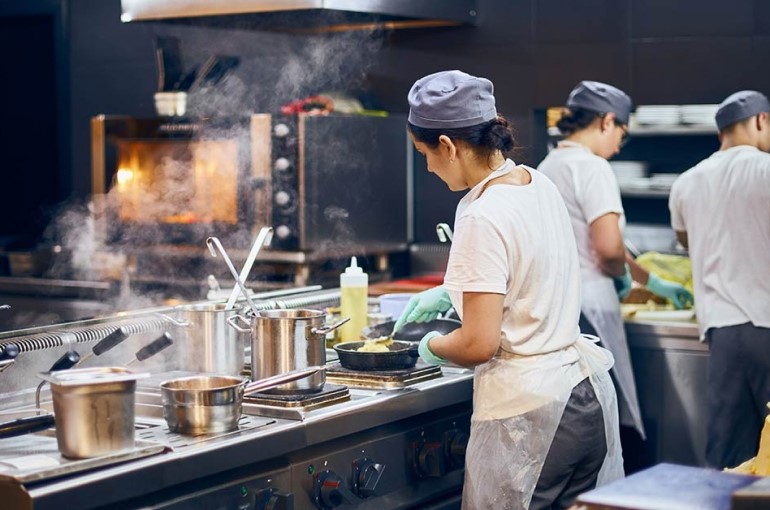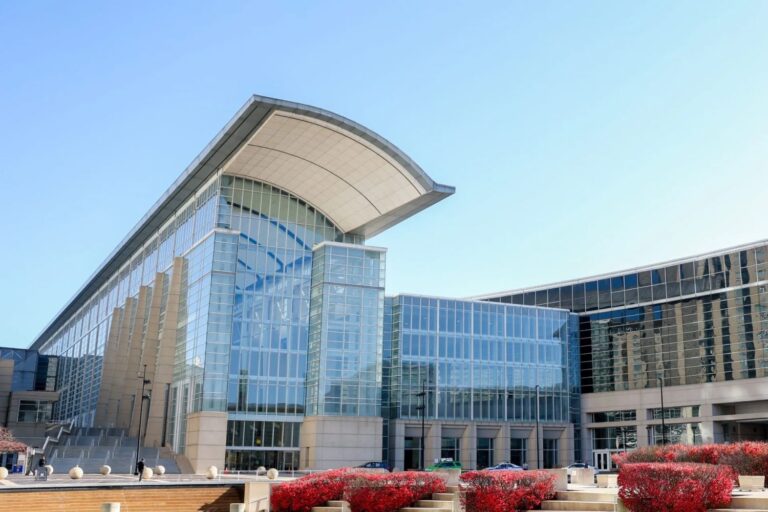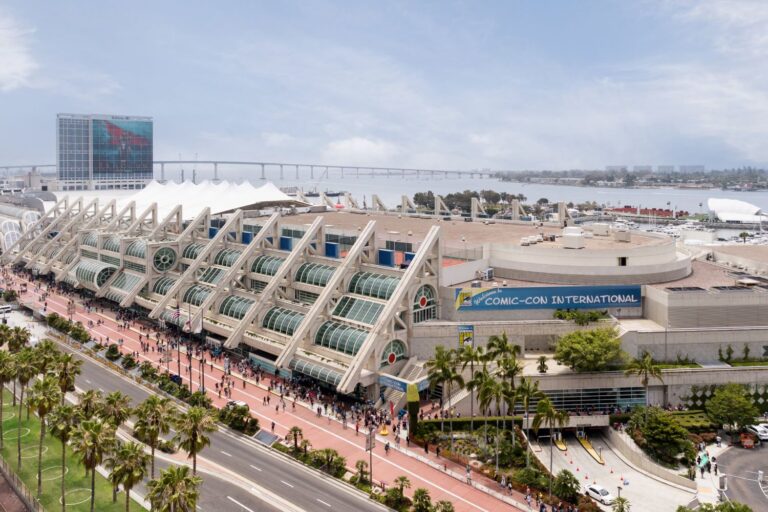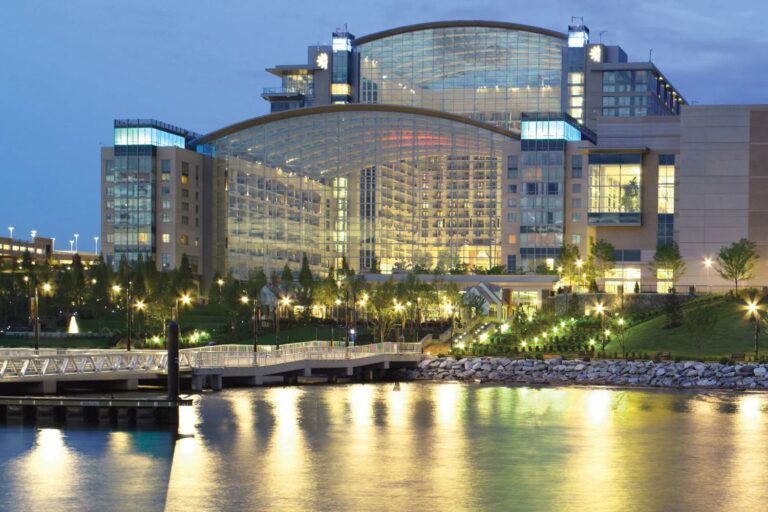Will the Shift from Brick-and-Mortar Restaurant to Dark Kitchen Be Cost-Effective?
The global online food delivery services market is projected to increase from $107.44 billion in 2019 and to $111.32 billion in 2020 at a growth rate of 3.61 percent. The sluggish growth in 2020 is mainly due to the economic downturn across the countries owing to the COVID-19 outbreak and the imperative measures implemented by governments to restrain the emerging spread of the death-induced pandemic. The market is then expected to augment and reach $154.34 billion in 2023 at compounded annual growth rate of 11.51 percent. To follow up, the global online food delivery market is foreseen to generate revenues of roughly $165 billion by 2024, and companies like Uber Eats, Deliveroo and Grubhub are all endeavoring to get a slice of the multi-billion-dollar pie.
In two-year 2017 and 2018, the UK restaurant sector is in ambiguity. The number of restaurants going bust went up by a fifth in 2017, and popular high street chains such as Strada, Jamie’s Italian and Byron are all forced to close around a third of their sites in 2018. High on the list of restaurateurs’ grievances are rising wage costs, unavailability of staff, and the increased cost of food due to the fall in the value of the pound. Add to this the ever-rising levels of competition in the market, and things are beginning to assess distinctly pear shaped for brick-and-mortar restaurant businesses.

Digital businesses are revamping the role of the long-embedded street and the retail landscape, creating new typologies of restaurant and uses of public space to efficiently optimize the business operation. Food delivery, backed by cutting edge technology, is increasingly proliferating and creating a new market: Restaurants that never take customers but rather produce food for delivery only. Shifting consumer demands along with the rising costs of operating a restaurant has launched a new segment in the food service industry – dark kitchens. Dark kitchens delineate a brand that delivers food with no dine-in facilities.
The epicenter of one of the disruptive-led new gastronomic trends lies in abandoned parking lots in the shadows of tall bridges incorporating shipping containers that blend harmoniously into the desolate environment, behind gray concrete piers and construction fences, surrounded by graffiti-covered walls and thumping hip-hop beats. This is the birthplace of the dark kitchen.

These dark kitchens have sprung up throughout several London neighborhoods, roughly near traffic hubs as central as they are unspectacular. To take a few minutes to observe the hustle and bustle around these metal boxes and open the door, a wave of mouthwatering aromas from all world will be released.
Whilst the number of dark kitchens had been flourishing since the arrival of food delivery outfits such as Uber Eats and Deliveroo, the massive increase in demand for home-delivered food amid the coronavirus lockdown has put them back on the front burner.
Coronavirus-induced lockdown measures have led some restaurants are being forced to shut down or move because of gentrification, others are setting up shop in what would traditionally have been considered undesirable locations. Companies are now scouring the market for appropriate warehouse space. In some cases, restaurants that had been forced to shut down due to the restrictions have taken out short-term leases to keep their customers satisfied via home delivery.
What is Dark Kitchen and Why Brick-and-Mortar Restaurant Businesses Should Invest on It?
#1. What is Dark Kitchen?
Dark kitchens, as it turns out, have no tables or wait staff, because they only prepare food for delivery services. Not all of them are in portable cabins or windowless shipping containers, some of these dark kitchens can be found in retail spaces or other empty rooms. These are kitchens not located in salubrious environment. Provided with cutting edge food preparation techniques, as well as the utilization of low-rent space and data-driven optimization, they are designed to maximize restaurant and delivery platform revenue in the emerging sector. The approach is as similar as the concept of warehousing in retail. The discrete pop-up kitchens are set up to provide low-cost and efficient hubs for quick production and distribution. This allows restaurant businesses to deliver food more quickly without taking up capacity at their original production locations, which means more revenue. All they need to cook meticulously and have it picked up.

It is an emerging trend that is been developed due to the changing conditions of the hospitality industry and in the digital age, as customers want easy, convenient ways to enjoy cuisines without cooking themselves or dining in at a restaurant.
CloudKitchens is the multi-million-dollar creation of former Uber chief and co-founder Travis Kalanick. Describing itself as a provider of smart kitchens for delivery-only restaurants, the company effectively operates as a property developer. For restaurants struggling to meet demand from existing facilities, CloudKitchens’ customers can lease high-tech, off-site kitchen space – the company also provides order management software which can integrate with popular delivery platforms.
Among the host of features included in its smart kitchens— beyond a fully-functioning commercial unit— are 24/7 building access, daily cleaning services, free Wi-Fi, and a helpful facility team that includes fire safety and security, according to its website.
The popularity of delivery platforms and the rise of low-cost kitchen-as-a-service units are seeing the growth of a new breed of delivery-exclusive outfits.
#2. Why Dark Kitchen is Worthwhile Investment for Small Restaurants in Digital Age?
The growth in dark kitchens is not just driven by small businesses trying to survive. Major chains are also embracing the trend to streamline food delivery. Large and chain brands have much to gain with dark kitchens, as they can optimize their delivery efforts without infringing on the dine-in experience. For small restaurateurs, adding a dark kitchen could allow you to break into delivery and catering without expanding your current footprint. It offers you a way to trial run what entering other segments could look like.
The benefits of this model are clear and offer a much-needed efficiency boost to restaurant businesses. The elimination of customer seating and waiting areas – which are often underused or even simply vacant – slashes rent costs, and there is no need to employ serving staff. Reducing overheads whilst simultaneously catering to an increased consumer preference towards home delivery appears to be a win-win for all concerned.
Another of the key attractions with dark kitchens is their ability to offer multiple cuisines from the same location. Deliveroo are considered the trailblazers within this segment, launched its dark kitchen service Deliveroo Editions in May 2017. The concept is simple: Existing restaurants, whether branded chains or local eateries, build the partnership with Deliveroo Editions, who recreate the restaurant’s food from their dark kitchen and deliver it to customers.
Providers like UberEATS, Supper, and Just Eat are coming to rely more heavily on these satellite kitchens as well. Other British companies, such as Food Stars or the US-based Kitchen United, use a different concept: they rent their ghost kitchens to independent restaurants and start-ups. It is a major trend on the horizon, particularly in London.

Hosting different restaurants in this way has multiple benefits. Firstly, it allows dark kitchens to offer a wide variety of different cuisines from a single location, appealing to a broad spectrum of consumer tastes. Whether you fancy a spicy chicken curry or a simple cheese sandwich, the dark kitchen can provide. What is more, dark kitchens enable restaurants without their own delivery services to tap into the lucrative home delivery market. Working closely with the chefs of the original restaurants, dark kitchen managers make sure that standardized dishes are produced which honor their brand. If a customer orders food from a dark kitchen, it should look and taste exactly as same as if it had come from a traditional outlet. The sharing of ingredients across different brands in a dark kitchen also improves economies of scale.
Another crucial benefit in the dark kitchen model lies in its ability to change menus quickly and easily. Many traditional restaurants pop up in response to changing tastes and trends, leaving them vulnerable when the new food fads roll into town. Dark kitchens face no such trouble. With no physical premises to refit or remodel they can change their menus – or even the entire concept of their restaurants – quickly and easily. The ability to adapt to trends and real time sales figures is a crucial asset in the often-fickle restaurant market. If a dark kitchen notices that a dish is not performing as well as expected, they can simply substitute it for something else.
While proprietors of dark kitchens do miss out on walk in sales and the high markups of drinks purchases from dine in customers, it is difficult to question their business model given the current state of the sector. Perhaps most importantly, dark kitchens are capitalizing on an overall market shift towards home delivery. Their ability to operate without any of the high overheads which have always plagued traditional restaurants could be the cornerstone of their success.
How Many Approaches Start-Up Companies Are Taking to Offer a Delivery-Only Food Service?
There are three different operating models on the food industry that start-up companies are taking to offer a delivery-only food service. Firstly, independent kitchen space rental startups focusing simply on real estate, setting up and hiring out kitchens in the right urban locations to serve the new demand or commandeering defunct high-street restaurants. Those property ventures also create a new opportunity for kitchen services companies that focus on making the food. Secondly, delivery platforms with their own dark kitchens, which leases kitchen space and then sub-rents that to food business from its platform. Finally, the coolest kids on the block are the virtual restaurant startups designing delivery-only food brands independent from delivery platforms.
Model 1: Kitchen Space Rental
It is a “We Work for kitchens” model. Startups acquire or lease over the long-term real estate space and then build kitchens optimized for food delivery that will be leased to food businesses. Food businesses can rent kitchen space from few hours to several months. It can be used by existing restaurants running out of capacity to serve the growing demand for food delivery or by entrepreneurs wanting to bring a new food concept to the delivery market. Moreover, kitchen space rental startups also try to optimize the asset utilization by letting customers book spaces for smaller periods than traditional rents (an evening, a day, a week, a month) from dark kitchens but also other food businesses.
The basic kitchen rental model is not where there is most potential for growth, even though there is clearly potential for scale. Instead, the most interesting operators are those building a broader offering.
Take London-based Karma Kitchen which has one separated kitchen and has plans to open two more sites in 2020. Karma has about 80 residents, which are more eclectic mix than those at the typical dark kitchen: Ranging from small food producers to corporate catering companies to virtual restaurants. It exclusively runs a shift system, whereby customers can book kitchen space for every time of day, relying on the requirements of the business. This make space rental cheaper for restaurant businesses who want to invest on this flourishing niche.

Co-founders and sisters Gini Newton and Eccie Newton started the company after struggling to find affordable kitchen space for their own catering business. “One of our biggest challenges and close to failures was actually finding kitchen space, and we just couldn’t believe that there was nothing kind of flexible and affordable in the market that we could just move into.” said by Eccie.
In early 2020, Karma Kitchen will host a three-week accelerator program for small restaurants looking to reach new customers, run by Uber Eats. The idea is to take them through the crash course thing like branding and labor force and help them launch on Uber Eats to examine out their culinary offerings to customers.
Besides the access to the kitchens, these players could also offer additional services like the dishwashing, access to technology to process orders and more. To develop and follow up in the competitive delivery-only food edge, Karma Kitchen has recently launched a marketplace with Uber Eats, where customers can easily order items from a range of its tenants – takeaway food from many virtual restaurants, grocery foods from small producers – receive them in a single delivery.
With these additional offerings, Karma Kitchen has become a brand. Henceforth, it has not suffered from negative media coverage and is considering further expansion in the UK.
Model 2: Delivery Platform Dark Kitchens
For delivery platforms, the idea is that it is cheaper to produce food in dark kitchen and it will therefore incentivize customers to order more on their platforms. Oscar Pierre, Glovo’s CEO, explains that it currently costs nearly €12 per person (in Spain) to order food on the platform which too expensive to be a frequent purchase. The reason why it is unaffordable is customer must pay the prices of running a real restaurant. Dark kitchens could reduce this amount to €7-8 which would become attractive. Moreover, developing food concepts into smart kitchens give food delivery platforms the ability to offer exclusivities to their customers to make them stick to the platform.

In Europe, Deliveroo started to launch dark kitchens in 2016 with its Editions offering. It has now 21 Editions sites (mainly in the UK) for a total of 140 virtual restaurants. The original plan was to launch hundreds of sites quickly, but it did not happen because it is a capital-intensive business and Deliveroo is still heavily investing in acquisition to face the intense competition in its core business.
“It is a challenging and fairly capital-intensive model roll out and is taking longer than initially expected” said by Yannis Alivizatos, general manager at Deliveroo Editions.
Deliveroo runs its kitchens rather exclusively. It does not charge tenants rent; however, the business model is to take up to 40 percent of its virtual restaurants turnover and force them to use exclusively Deliveroo to deliver their meals.

Alivizatos claims that several restaurants in Editions’ sites are observing the incremented revenues of 30 percent without accelerating fixed costs by a penny.
Glovo launched “Cook Rooms” in 2018. It has now 2 dark kitchen spaces in Spain (Barcelona and Madrid). It offers extra space to restaurants on the Glovo platform in exchange of a 5 percent extra commission on orders taken. Taking a commission, rather than charging a flat monthly fee, keeps the platform and the restaurants’ incentives aligned, says Pierre.
UberEats, by contrast, does not run any of its own dark kitchen, but it does deliver from more than 900 virtual restaurants in the UK. The company is adopting a partnership approach with kitchen space rental startups. In the UK, it is launching a restaurant accelerator with Karma Kitchen. The idea is to take 5-7 food concepts currently underserved on the Uber Eats platform and kickstart them in a Karma Kitchen. Support will be offered in branding, marketing and operations.
Glovo, Deliveroo and Uber Eats are all attracted to dark kitchens for the same reason: It is cheaper to produce food in these spaces – and therefore it is easier to entice more customers to order more food, more often.
Model 3: Delivery-Only Food Brands

The most exciting dark kitchen operators: The delivery-only food brands. The idea is to design food specifically for takeaway and build food concepts missing on delivery platforms and sought by customers. It takes a few months to design the concept and the recipes, another few month to test it and iterate before scaling it into a network of dark kitchens. Technology is used to reinvent how kitchens should be run in a delivery only world from order management to sales forecasting and meal production optimization.
Virtual restaurants from Taster or Keatz work closely with delivery platforms to identify areas of unmet demand, whether in location or cuisine, then rent out space from an outfit such as CloudKitchens or Karma.
Taster uses its own algorithms to forecast each week’s sales, bringing efficiencies in ordering ingredients. It is building a following for its brands, such as Mission Saigon and Out-Fry, on Instagram and through its food packaging, to attract repeat customers. With some advance preparation, Anton Soulier, a former Deliveroo executive who founded Taster in 2017, claims a Taster kitchen can turn around an order in three minutes, compared with 15 minutes at a traditional restaurant.
“The beauty of the model is restaurants and food are the least scalable business in the world,” said by Soulier. “We are trying to make it more scalable and expand very quickly.”









